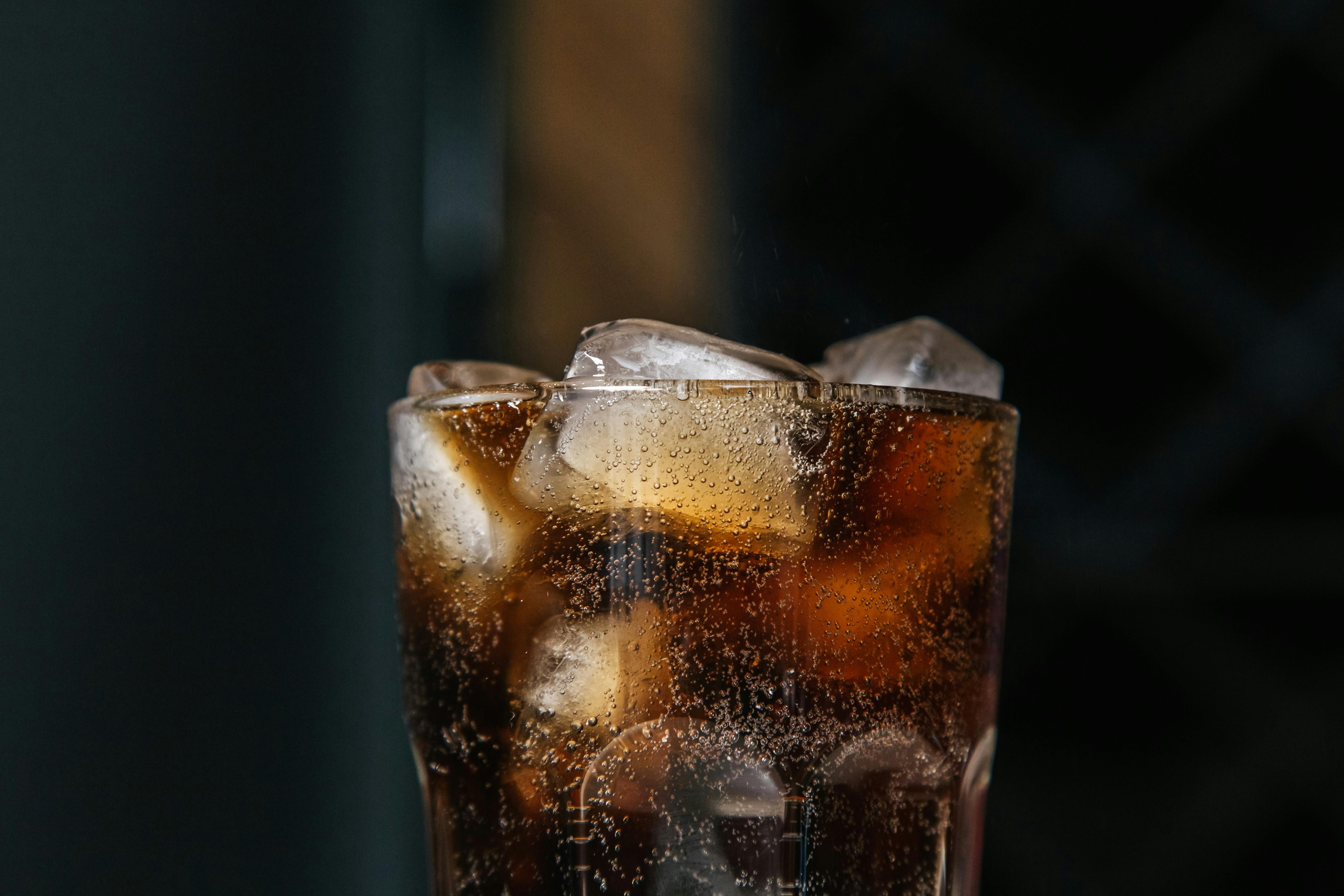Energy Drinks vs. Carbonated Beverages
Energy drinks have become increasingly popular in recent years, but how do they compare to other carbonated beverages? This article will compare energy drinks to other carbonated beverages based on their ingredients, effects on the body, and health benefits. It will also discuss how these different types of drinks can be incorporated into a healthy lifestyle.
By examining the different types of energy drinks and other carbonated beverages available, we can better understand their differences and determine whether or not they are suitable for our diet. We will look at the nutritional values, caffeine content, and sugar levels of each beverage to gain a clearer understanding of their composition. Additionally, we will explore the effects that different types of energy drinks have on the body and weigh the pros and cons of incorporating them into our daily diets. Finally, we will examine the potential health benefits that can come from drinking different types of carbonated beverages.Sparkling energy drinks are a type of beverage that is made with special ingredients to give you a boost of energy. They typically contain caffeine, B vitamins, and other stimulants like guarana, taurine, and ginseng. Sparkling energy drinks usually come in carbonated form, making them fizzy and refreshing to drink.
These types of drinks are popular among people who need an extra burst of energy, such as athletes or students. The caffeine in sparkling energy drinks can help people focus better and increase alertness. The other ingredients may help improve mental clarity, reduce fatigue, and increase physical performance.
When choosing a sparkling energy drink, it’s important to pay attention to the ingredients list to ensure that it contains healthy ingredients that won’t cause negative side effects such as headaches or jitters. It’s also important to monitor your intake of these drinks since too much caffeine can have adverse health effects.
Contents
Ingredients of Sparkling Energy Drinks
Sparkling energy drinks are becoming increasingly popular among people looking for an easy way to boost their energy levels. They contain a variety of ingredients, such as caffeine, taurine, and B vitamins. Caffeine is the main stimulant in most sparkling energy drinks, providing a quick boost of alertness and energy. Taurine is an amino acid that helps the body produce energy, while B vitamins help the body convert carbohydrates into fuel. Other ingredients may include guarana extract, which contains caffeine; ginseng extract, which may help increase alertness; and sugar or artificial sweeteners for flavor.
Some sparkling energy drinks also contain herbs such as ginkgo biloba and ginseng that may help improve focus and mental clarity. In addition to these ingredients, many brands contain electrolytes like sodium and potassium to replenish fluids lost through sweating or physical activity. These electrolytes help restore fluid balance in the body and provide hydration. Some sparkling energy drinks also contain antioxidants to help protect cells from damage caused by free radicals.
Benefits of Sparkling Energy Drinks
Sparkling energy drinks offer a range of benefits to people who are looking for an alternative to regular energy drinks. They provide a greater level of stimulation than traditional energy drinks and can help people stay alert and energized throughout the day. Additionally, sparkling energy drinks are often lower in calories and can be more refreshing than other energy drinks. Here are some of the key benefits of sparkling energy drinks:
Higher Level of Stimulation: Sparkling energy drinks contain higher levels of stimulants than regular energy drinks, which can help give you an extra boost when you need it most. The higher amounts of caffeine, guarana, and taurine can provide you with an extra level of mental alertness and physical stamina.
Lower in Calories: Many sparkling energy drinks are often lower in calories than other types of energy drinks, so they can provide a healthier alternative when you need an extra lift. Additionally, many sparkling energy drinks contain natural sweeteners like stevia or monk fruit extract that are much better for your health than sugar or artificial sweeteners.
Refreshing Taste: Sparkling energy drinks often have a more refreshing taste than other types of energy drinks because they contain carbonated water instead of regular water. This added carbonation gives them a “sparkle” that makes them more enjoyable to drink. Additionally, many sparkling energy drinks contain natural fruit flavors that make them more flavorful than traditional energy drinks.
Overall, sparkling energy drinks offer a range of benefits over traditional types of energize. They provide a higher level of stimulation, are lower in calories, and have a more refreshing taste that makes them enjoyable to drink. If you’re looking for an alternative to regular energize, then consider trying out some sparkling varieties for yourself.
Advantages of Sparkling Energy Drinks
Sparkling energy drinks are a popular type of beverage that contain caffeine and other ingredients designed to provide a quick boost of energy. Their convenience and wide availability makes them a go-to choice for many people looking for a quick pick-me-up. Some of the advantages of sparkling energy drinks include improved focus, increased alertness, and improved physical performance. The caffeine content in these drinks is also beneficial in providing an extra boost when feeling fatigued or drowsy. Additionally, sparkling energy drinks often contain natural flavors that can make them more enjoyable than plain coffee or tea.
Disadvantages of Sparkling Energy Drinks
Although there are benefits to consuming sparkling energy drinks, these beverages can also have some drawbacks. High levels of caffeine consumption can lead to jitteriness and anxiety, as well as difficulty sleeping or concentrating. Additionally, many sparkling energy drinks contain high levels of sugar and artificial sweeteners, which may contribute to weight gain when consumed regularly. Some brands also contain large amounts of taurine and other herbal stimulants, which can have side effects such as headaches and nausea when consumed in excess. Furthermore, the bright colors and flavors used in some sparkling energy drinks may be appealing to children, leading to potentially hazardous consumption if they are not aware of the risks involved with excessive consumption.
Comparison Between Carbonated Beverages and Sparkling Energy Drinks
Carbonated beverages and sparkling energy drinks are becoming increasingly popular amongst consumers, as both offer a unique, fizzy refreshment. While the two may seem similar, there are some key differences between them.
First and foremost, the most obvious difference between carbonated beverages and sparkling energy drinks is their ingredients. Carbonated beverages typically contain water, carbonation, sugar or artificial sweeteners, flavorings like fruit juices or extracts, and preservatives. On the other hand, sparkling energy drinks contain water, carbonation, sugar or artificial sweeteners, stimulants like caffeine or guarana extract, B-vitamins like niacin and riboflavin, taurine and other amino acids.
Another difference between these two types of drinks is their taste. Carbonated beverages usually have a sweeter taste due to their higher sugar content compared to sparkling energy drinks which tend to be more tart. This is because many sparkling energy drinks contain additional stimulants that can give them a bitter flavor.
When it comes to health benefits, both carbonated beverages and sparkling energy drinks can provide some nutritional value depending on the ingredients used in their production. Carbonated beverages can provide hydration as well as small amounts of vitamins and minerals from the fruit juice or extracts they include in their recipes. On the other hand, sparkling energy drinks often contain B-vitamins as well as caffeine which can help boost mental alertness.
In conclusion, while carbonated beverages and sparkling energy drinks may look similar on the surface they are actually quite different when it comes to their ingredients and nutritional value. Consumers should pay attention to what goes into each type of drink in order to make an informed decision about which beverage is right for them.

How Much Caffeine is in a Typical Serving of Sparkling Energy Drink?
The amount of caffeine in a typical serving of sparkling energy drinks can vary depending on the brand and size of the drink. Generally, an 8-ounce can of sparkling energy drink contains between 50 and 75 milligrams of caffeine.
However, larger cans of sparkling energy drinks can contain upwards of 100 milligrams of caffeine or more. For example, a 16-ounce can may contain anywhere from 80 to 120 milligrams of caffeine. It is important to read the label carefully when selecting an energy drink to ensure that you are getting an appropriate amount of caffeine for your body size and activity level.
It is also important to note that some brands add other ingredients to their drinks, such as guarana or taurine which can increase the amount of caffeine in a single serving. Some popular caffeinated beverages also contain additives such as sugar, which can add calories and contribute to health risks if consumed in excess.
The American Academy of Pediatrics recommends that children and adolescents avoid consuming energy drinks due to their high levels of caffeine and other potentially dangerous ingredients. If you are pregnant or nursing, it is best to avoid consuming any type of energy drink due to the possible health risks associated with high levels of caffeine consumption during these times.
In general, it is best to stick with low-caffeine options when it comes to sparkling energy drinks or any type of caffeinated beverage. If you do choose to consume higher levels of caffeine, make sure you are aware of the potential health risks associated with doing so and always read labels carefully before consuming any type of beverage.
Potential Health Risks Associated with Consuming Too Many Carbonated Beverages or Sparkling Energy Drinks
Excessive consumption of carbonated beverages and sparkling energy drinks can lead to a variety of health problems. These include obesity, type 2 diabetes, dental erosion, osteoporosis and even cardiovascular disease. In addition, the high sugar content in these drinks can lead to an increased risk of developing metabolic syndrome, which is a cluster of conditions that increase the risk of heart disease, stroke and type 2 diabetes. Furthermore, the caffeine content in these drinks can cause restlessness, insomnia and anxiety.
Consuming too many carbonated beverages or sparkling energy drinks can also lead to dehydration due to the high sodium content. In addition, these drinks may contain other unhealthy ingredients such as artificial sweeteners that have been linked to health issues such as cancer and obesity. Finally, excessive consumption of these beverages has been associated with an increased risk for kidney stones due to the high levels of phosphorus in them.
In conclusion, it is important to be aware of the potential health risks associated with excessive consumption of carbonated beverages or sparkling energy drinks. It is recommended that people limit their intake of these types of drinks and opt for healthier alternatives such as water or unsweetened tea instead.

Conclusion
In conclusion, sparkling energy drinks and other carbonated beverages have some similarities and differences. They both contain carbon dioxide to provide the fizz, but energy drinks also contain stimulants that increase alertness and focus. Energy drinks may be more effective in providing short-term boosts of energy, but they can also be dangerous if consumed in excess. Other carbonated beverages are generally considered safe to consume in moderation and are much more affordable than energy drinks. It is important to consider both the risks and benefits of these beverages when deciding which one is best for you.
Ultimately, it is up to the individual consumer to choose the beverage that best suits their needs. However, it is important to understand the potential risks associated with overconsumption of either type of beverage before making a decision.
0 Comments